National Aeronautics and Space Administration
Goddard Space Flight Center
Search:

Balloon Program Office
About BPO
Balloon Program FAQ
- What is the mission of the NASA Balloon Program?
- What are scientific balloons?
- What is a typical flight profile/process/plan?
- Where are these balloons launched and why these locations?
- What does conventional ballooning mean?
- What does long duration ballooning mean?
- What does it cost to do a balloon mission?
- What are the longest NASA balloon flights?
Flight Experiment Questions
- Why would someone want to fly an experiment on a balloon?
- What are the types of science experiments flown?
- How do the scientists get their data?
- What is a "piggyback" payload?
- Who, besides scientists, flies on balloons?
Balloon Questions
- What are balloons made out of?
- What are the different volumes of these balloons?
- What are the different sizes of these balloons at float?
- What can I compare these sizes to?
- What are zero-pressure balloons?
- What are super-pressure balloons?
- How does the balloon fly?
- What type of gas is used to inflate the balloon?
- Why not use Hydrogen to inflate the balloon?
- Does the balloon need to be fully inflated before launch? If not, why not?
Flight Systems Questions
- What is a payload?
- What does the balloon system include?
- What is a flight ladder?
- What are the size and weight of the biggest experiments?
Flight Performance Questions
- What is a typical float altitude?
- Why do the scientists want these altitudes?
- What are the highest and lowest altitudes that NASA balloons fly?
- What is the atmosphere like at that altitude?
- What is the temperature at that altitude?
- What is the coldest layer atmosphere? Warmest?
- How does the balloon get to the pre-determined altitude and then stops going higher?
- Will it remain at that altitude forever? If not, why?
- How fast does the balloon go after launch until it reaches float altitude?
- How fast does the balloon go after it reaches float altitude?
- What determines the direction the balloon goes?
- What happens during the day to a balloon at float?
- What happens at night to a balloon at float?
- Can you control the altitude of the balloon?
- What is meant by "flight termination"? How does a balloon flight end?
- What size parachutes are used?
- Can airplanes be in the way when the balloon is ascending or after the flight and the payload is coming down after flight termination?
- What is the mission of the NASA Balloon Program?
- The NASA Balloon Program provides low-cost, quick response, near space access to NASA's science community for conducting cutting edge science investigations. This includes observatory-class payloads with advanced technologies and large aperture/mass
- Serve as a technology development platform for future space missions Instrument & Subsystem development for NASA Flight Projects
- Provide hands-on training of Students and Young Scientists.
- What are scientific balloons?
- Scientific balloons are very large inflated structures that carry scientific instruments to the edge of space to conduct scientific investigations.
- What is a typical flight profile/process/plan?
- Most balloon flights follow the same steps. The payload and flight instrumentation are prepared for launch. The payload is attached to the launch vehicle, and the balloon, parachute, and flight train are attached. The balloon is inflated with Helium to the desired amount of lift. The balloon and payload are launch and ascend to the float altitude. After the desired time at float, the flight is terminated, and the balloon and payload come back down to Earth. Both the balloon and payload are recovered.
- Where are the NASA scientific balloons launched and why these locations?
- Where - There are two permanent launch locations in the US located in Palestine, Texas and Ft. Sumner, New Mexico. Balloons are also launched from other locations around the world such as Australia, Antarctica, Sweden, New Zealand, Brazil, and Canada.
- Why these locations - There are a number of factors that determine the selection of launch locations, among those are mission duration, need for flights over low population areas for safety reasons, the science to be collected during the mission, cost, wind speed and direction, etc. The balloons flights from the launch locations with the US are usually short (hours to a day - these are called "conventional" balloon flights), and the durations from other locations are longer (days to weeks - these are called "long duration" balloon flights).
- What does conventional ballooning mean?
- These types of missions fly for short periods, from hours to a day or two.
- What does long duration ballooning mean?
- These types of missions utilize either existing balloons in locations where the balloon is in constant daylight, or will use a new balloon design that is intended to achieve durations of 100 days or longer at mid-latitudes. The long duration flights in constant daylight are currently flown from Antarctica and Sweden. The super pressure balloon system that may fly for up to 100 days is currently still under development.
- What does it cost to do a balloon mission?
- It all depends on the size, complexity, and requirements for the mission. Typically smaller payloads, ones flown in the US, and shorter duration flights cost less. Long duration flights from remote locations like Antarctica cost more. The cost of a balloon flight can be one hundred times less than a rocket launched satellite mission.
- What are the longest NASA balloon flights?
- The longest NASA balloon flights have all been launched from William's Field, Antarctica where the flights circle the South Pole.
- The Super-TIGER payload was launched on December 8, 2012 and flew for 55 days, 1 hour, and 34 minutes at 38.7 km (127,000 feet)
- In 2009 a NASA Super Pressure Balloon test flight flew for 54 days, 1 hour, and 29 minutes.
- The CREAM payload was launched on December 15, 2004 and flew for 41 days 21 hours and 36 minutes.
- Why would someone want to fly an experiment on a balloon?
- Flying on a balloon above 30.5 km (100,000 ft) allows an experiment to have a clear view of the heavens above. This can allow for excellent views of heavens without any interference from the atmosphere. It is like being in space, but it cost a lot less than rocket or a space mission. Smaller "piggyback" payloads can also be flown.
- What are the types of science experiments flown?
- Balloons support space and Earth science research and investigations. Some experiments are fundamental science research, and others are used to test out new detectors or instruments.
- How do the scientists get their data?
- The scientists can get their data in a number of different ways. Data can be transmitted via "line of sight" communication. This is usually done for short flights that do not travel far from the launch location. Data can also be transmitted from the payload up to a satellite and then sent back down and received at a control center where it will be stored or sent on via the internet to the scientist's home institutions. Data can also be stored on board and retrieved after the end of the mission and the payload is recovered.
- What is a "piggyback" payload?
- Piggyback payloads are typically small instruments that fly on another balloon flight. They are typically small innovative instruments and do not require all of the support a full scientific instrument payload may need. They can be added to an existing flight with little added weight or power requirements. It is an advantage that balloon flights can accommodate these small cutting edge technology development instruments and give them sort turn around flight opportunities.
- Who, besides scientists, flies on balloons?
- There are many test systems that have been flown including solar cell calibration for space use qualification, and educational outreach opportunities.
- What are balloons made out of?
- Balloons are made of thin plastic film (Polyethylene), 0.8 mil (0.0008 inches or 0.02 mm), in thickness similar to that used for wrapping sandwiches.
- What are the different volumes of these balloons?
- Scientific balloons are typically range in volume from 1 million cubic feet (MCF) (28,316 cubic meters) to 60 MCF (1,699,000 cubic meters). Size selection for particular flight is determined by the mass of the payload and the desired altitude for the mission of interest. The most common balloons used by NASA are the 11 MCF (311,500 cubic meters), 29 MCF (821,000 cubic meters), 34 MCF (962,800 cubic meters), and 40 MCF (1,113,000 cubic meters) balloons.
- What are the different sizes of these balloons at float?
- Fully inflated, a 40 MCF balloon is ~396 ft (121 m) tall and ~459 ft (140 m) in diameter. A 60 MCF balloon is ~428 ft (130 m) tall and ~534 ft (163 m) in diameter.
- What can I compare these sizes to?
- The standard size that NASA flies the most has a volume of 40 MCF (million cubic feet). That volume is equivalent to the volume of over 197 Goodyear blimps.
- What are zero-pressure balloons?
- Zero pressure balloons are open at the bottom to prevent pressurization. Zero pressure balloons have open ducts hanging from the side of the balloon to allow gas to escape and to prevent the pressure inside the balloon from building up during gas expansion. Because of gas loss, mostly due to the day night cycling of the balloon, the duration of this type of balloon is limited.
- What are super-pressure balloons?
- Super-pressure balloons are completely sealed and have no open ducts. The gas cannot escape and gas pressure builds up when the gas expands. Super-pressure balloon can fly for longer duration since gas loss is minimized.
- How does the balloon fly?
- The balloon flies because of the buoyancy force. The buoyancy force is the net force that results from the difference between the mass of displaced air and the total mass of the balloon system
- What type of gas is used to inflate the balloon?
- NASA uses only Helium to inflate the balloons. It is lighter than air. Typically one pound of Helium can lift 6.2 pounds of mass.
- Why not use Hydrogen to inflate the balloon?
- Hydrogen is not used because of safety concerns. It is true that the same volume of Hydrogen can lift more than Helium, but Hydrogen is very flammable. NASA uses only Helium to inflate the balloons.
- Does the balloon need to be fully inflated before launch? If not, why not?
- No, the balloon is not fully inflated before launch. A measured amount of Helium is put into the balloon that will give it enough lift to get off the ground and ascend to the desired float altitude. As the balloon rises, the gas inside the balloon expands because the atmospheric pressure surrounding the balloon drops. The atmosphere is 100 to 200 times less dense at the float altitudes than on the ground. If the balloon is fully inflated on the ground, the gas will either need to be vented out (Zero pressure balloons) and wasted as it expands. In the case of super-pressure balloons (closed system), the excess gas would exert excessive pressure on the skin and ultimately can cause it to rupture. A balloon that is fully inflated on the ground will also have way too much lifting force.
- What is a payload?
- A payload is what the balloon carries and is made up of the scientific instruments and all the electronics that support the mission. The payload is usually suspended below the balloon.
- What does the balloon system include?
- The balloon system includes a number of different components. Starting from the top of the system on down, the balloon system includes the balloon, a flight train that is made up of the parachute and ladder, and the payload.
- What is flight ladder?
- The ladder is part of the flight train. It is a set of steel cables with cross braces that is placed above the payload and below the parachute. It is used to provide space between the balloon and the payload.
- What are the size and weight of the biggest experiments?
- Payloads come in all shapes and sizes depending on the science experiments needs. They can be up to 22 ft (6.7 m) tall and over 16 ft (4.9 m) wide
- Many balloon experiments can be as heavy as three small cars or up to six thousand pounds.
- The largest payloads balloons can carry are up to 8000 pounds (3600 kg).
- What is a typical float altitude?
- The typical float altitude ranges from 110,000 to 130,000 ft (33.5 to 39.6 km).
- Why do the scientists want these altitudes?
- To have clear view of the sky above the atmosphere, all clouds, and pollution effects. Typically balloons float above 99.5% of the Earth's atmosphere.
- What are the highest and lowest altitudes the NASA balloons fly?
- The current highest altitude achieved by a NASA balloon is ~160,000 ft (~48.8 km).
- Most scientists want to generally fly above a specific altitude or as high as possible to improve their collection of science data. There is no minimum altitude, but the NASA Balloon Program generally tries to fly above 80,000 to 90,000 ft (24.4 km to 27.5 km)
- What is the atmosphere like at that altitude?
- The atmosphere is near vacuum at balloon float altitudes. Typically the atmospheric pressure is only a few millibars.
- What is the temperature at that altitude?
- Quite cold! Typically -20 to -40°C
- What is the coldest layer atmosphere? Warmest?
- The coldest part of the atmosphere is called the "trope" or troposphere. The temperatures vary depending on where in the world you fly and at what times of the year. The balloon can ascend through a layer where it can be less than -85°C. It can also be almost as warm as room temperature at certain altitudes. The plot below shows a typical atmosphere temperature profile. Notice how it is warm on the ground and gets colder as you go up and then it gets warmer again as you go higher.
- How does the balloon get to the pre-determined altitude and then stops going higher?
- The balloon will continue to rise until the buoyancy force is zero. The buoyancy force depends on the mass of the balloon system, the mass of the helium, and the size of the balloon. In a Zero Pressure balloon, when the balloon reaches its float altitude, and is fully filled out, the excess Helium is vented out of the bottom of the balloon until the buoyancy matches the entire system mass.
- Will it remain at that altitude forever? If not, why?
- Theoretically, if we can prevent any gas loss and maintain a constant temperature at altitude, the balloon can stay at that altitude forever. In reality that does not happen. Lifting gas loss through the skin, holes, defects, day night cycling of the balloon and venting gas, or other means is inevitable. Temperature variations and day night cycles typically occurs in mid latitude regions as we move farther from the poles.
- How fast does the balloon go after launch until it reaches float altitude?
- The balloon typically rises at a speed of 1,000 ft/minute (5.1 m/sec). It takes approximately 2 hours to reach a float altitude of 120,000 ft (36.6 km).
- How fast does the balloon go after it reaches float altitude?
- At float altitude, the balloon's speed relative to the ground below can be anywhere between 0 mph to 30 mph (48.3 km/hour). The average speed at altitude is 15 mph (24.1 km/hr).
- What determines the direction the balloon goes?
- The predominant wind speed and direction in the different layers of the atmosphere. The balloon is blown by these winds.
- What happens during the day to a balloon at float?
- The balloon is a thermal vehicle. It heats up during the day when exposed to the sun. As a Zero Pressure balloon heats up, it vents some of the Helium through the vent ducts to prevent pressurizing. It flies at a slightly higher altitude during the day. A super pressure balloon does not vent gas when it heats up. The increased temperature increases the internal pressure.
- What happens at night to a balloon at float?
- With no sun or solar input at night, the balloon cools down. As a Zero Pressure balloon cools down, it will float at a lower altitude since the Helium can lift less mass at a lower temperature. If the balloon vents Helium during the day, it will also have less lift. Usually ballast is dropped to reduce the system mass, and to prevent the balloon from floating at too low an altitude at night. When a super pressure balloon cools down, the internal balloon pressure in the balloon reduces. Super pressure balloons are designed to have a minimal positive internal balloon at night. If it has a positive internal pressure, it will continue to fly at the same altitude even at night.
- Can you control the altitude of the balloon?
- Altitude can be changed to some extent by either reducing the lift in the balloon or reducing the mass of the system. Lift is reduced by letting some of the Helium out of the balloon. Valves on the top of the balloon are opened and closed by command to vent gas. Venting gas can stop the balloon from rising or cause it to drop in altitude. The mass of the entire system can be reduced by dropping ballast (dead weight) that is carried along with the science instrument. Ballast is made of fine glass, sand, or fine steel shot. Ballast drops aid in lifting the balloon upward because the same amount of Helium in the system then has to lift less mass.
- What is meant by "flight termination"? How does a balloon flight end?
- At the end of a flight when the objectives of the mission have been met, the decision to end or "terminate" is made. When the balloon system is over an area that is safe for ending the flight, a command is sent to the balloon system to separate the payload from the balloon. The payload has a parachute attached to it. The payload floats on the parachute to the ground. When the payload and parachute system separates from the balloon, a large hole is ripped in the balloon, and the Helium escapes. The balloon then falls back to Earth. Both the balloon and payload are recovered.
- What size parachutes are used?
- The size parachute flown depends on the weight of the payload. The heavier the payload, the larger the parachute required. The parachutes flown by NASA, are "flat circular" parachutes, and can be up to 159 ft (48.5 m) in diameter.
- Can airplanes be in the way when the balloon is ascending or after the flight and the payload is coming down after flight termination?
- NASA balloons flights are coordinated with the Federal Aviation Administration (FAA). FAA flight controllers direct aircraft in the area around the locations where launches take place to avoid interference, and they provide launch clearance. FAA flight controllers are notified before flight termination and their clearance is required to end a flight. Balloon flight controllers are in constant contact with FAA flight controllers when going through controlled air space to ensure safe operations and that all aircraft are avoided.
Balloon Program Questions
Back to the top
Back to the top
Back to the top
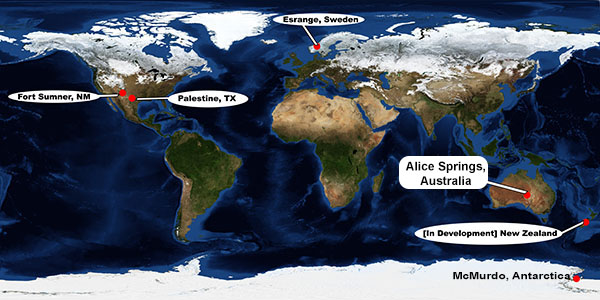
|
Back to the top
Back to the top
Back to the top
Back to the top
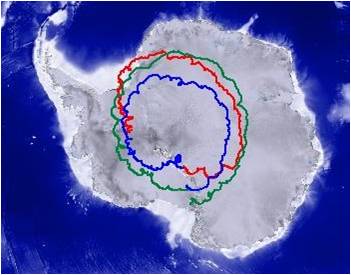
|
Back to the top
Flight Experiment Questions
Back to the top
Back to the top
Back to the top
Back to the top
Back to the top
Balloon Questions
Back to the top
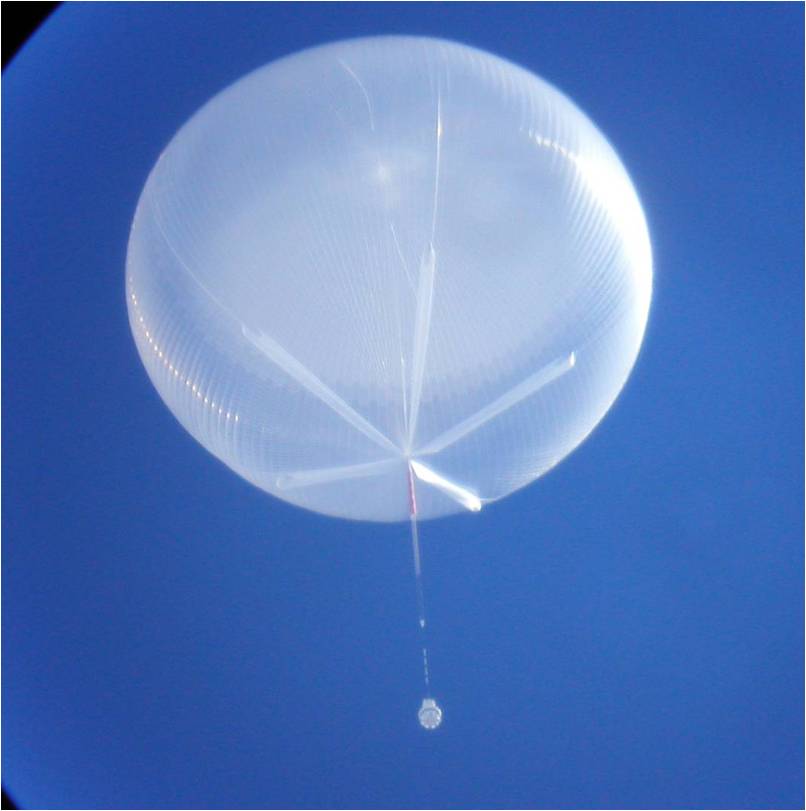 |
Back to the top
Back to the top
Back to the top
Back to the top
Back to the top
Back to the top
Back to the top
Back to the top
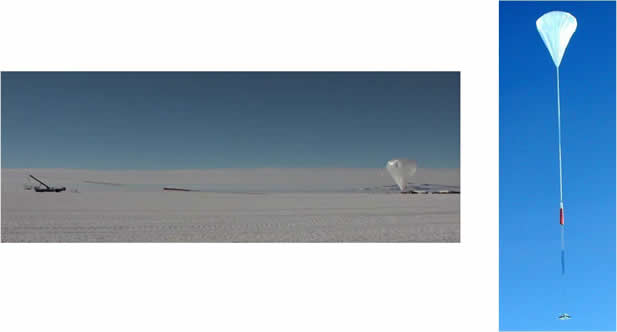 |
Back to the top
Flight Systems Questions
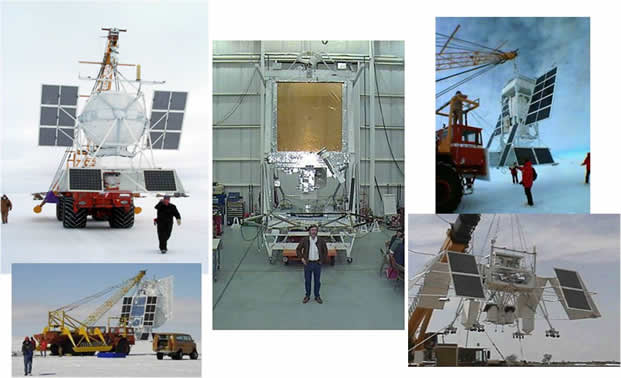
|
Back to the top
Back to the top
Back to the top
Back to the top
Flight Performance Questions
Back to the top
Back to the top
Back to the top
Back to the top
Back to the top
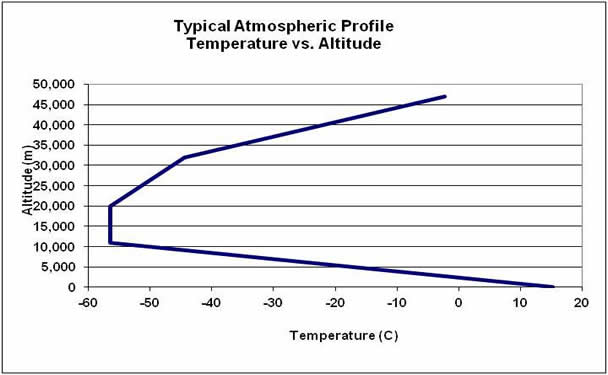 |
Back to the top
Back to the top
Back to the top
Back to the top
Back to the top
Back to the top
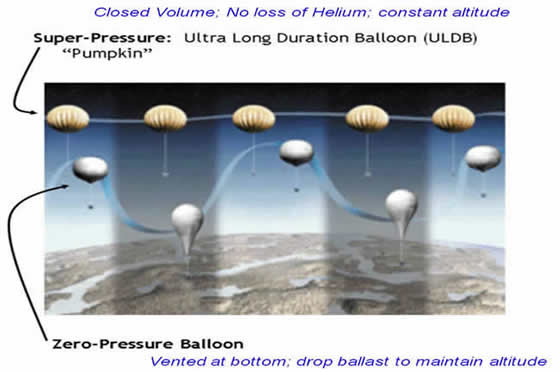 |
Back to the top
Back to the top
Back to the top
Back to the top
Back to the top
Back to the top
NASA Code 820
Scientific Balloon Update
Report back for the latest update from NASA's Balloon Program Office.
- NASA Official: Debora Fairbrother
- Point of Contact: Valerie Brizak
